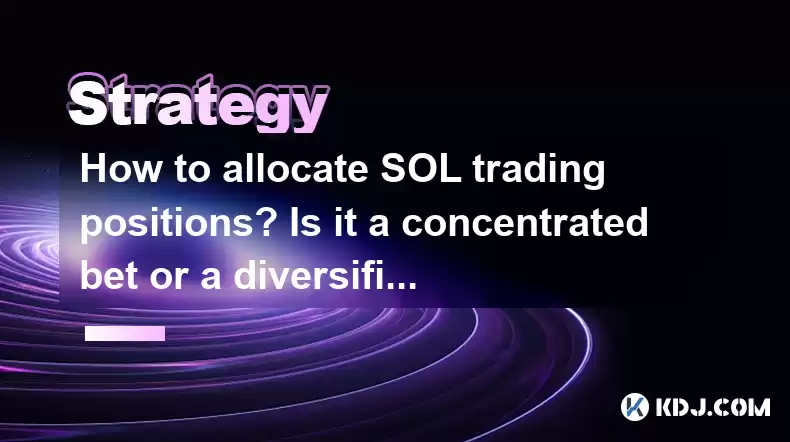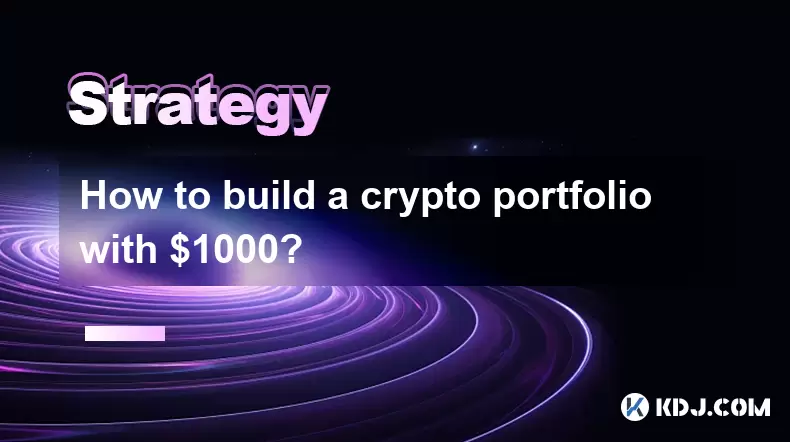-
 Bitcoin
Bitcoin $115000
0.12% -
 Ethereum
Ethereum $3701
4.50% -
 XRP
XRP $3.081
2.99% -
 Tether USDt
Tether USDt $0.0000
-0.01% -
 BNB
BNB $767.9
1.45% -
 Solana
Solana $169.5
3.13% -
 USDC
USDC $0.9999
0.01% -
 Dogecoin
Dogecoin $0.2106
4.30% -
 TRON
TRON $0.3334
1.62% -
 Cardano
Cardano $0.7564
2.54% -
 Stellar
Stellar $0.4165
0.76% -
 Hyperliquid
Hyperliquid $38.75
0.25% -
 Sui
Sui $3.593
3.00% -
 Chainlink
Chainlink $17.08
3.59% -
 Bitcoin Cash
Bitcoin Cash $573.6
4.35% -
 Hedera
Hedera $0.2508
-0.84% -
 Avalanche
Avalanche $23.07
6.46% -
 Ethena USDe
Ethena USDe $1.001
-0.02% -
 Litecoin
Litecoin $120.8
8.17% -
 UNUS SED LEO
UNUS SED LEO $8.943
-0.32% -
 Toncoin
Toncoin $3.400
-5.60% -
 Shiba Inu
Shiba Inu $0.00001255
1.54% -
 Uniswap
Uniswap $9.908
6.32% -
 Polkadot
Polkadot $3.718
2.10% -
 Monero
Monero $303.0
-0.74% -
 Dai
Dai $0.9999
-0.02% -
 Bitget Token
Bitget Token $4.392
0.91% -
 Cronos
Cronos $0.1403
6.31% -
 Pepe
Pepe $0.00001076
1.13% -
 Aave
Aave $267.2
1.80%
How to allocate SOL trading positions? Is it a concentrated bet or a diversified investment?
When trading SOL, consider a concentrated bet for higher potential returns or a diversified investment to mitigate risk, based on your risk tolerance and market analysis.
Apr 29, 2025 at 12:35 am

How to Allocate SOL Trading Positions? Is it a Concentrated Bet or a Diversified Investment?
When it comes to trading Solana (SOL), one of the critical decisions traders face is how to allocate their positions. Should they go for a concentrated bet, putting a significant portion of their capital into SOL, or opt for a diversified investment strategy? This article delves into the considerations and strategies for allocating SOL trading positions, helping traders decide whether to concentrate or diversify their bets.
Understanding SOL and Its Market Dynamics
Before diving into allocation strategies, it's essential to understand what SOL is and how it behaves in the market. Solana (SOL) is a high-performance blockchain platform known for its fast transaction speeds and low fees. It has gained significant attention in the cryptocurrency space due to its potential to support decentralized applications (dApps) and decentralized finance (DeFi) projects.
The market dynamics of SOL can be quite volatile, with price movements influenced by various factors such as network upgrades, partnerships, and broader market sentiment. Traders need to stay informed about these factors to make informed decisions about their positions.
Concentrated Bet: Pros and Cons
A concentrated bet on SOL involves allocating a large portion of your trading capital to this single asset. This strategy can be appealing for traders who have a strong conviction in SOL's potential for growth and are willing to take on higher risk for potentially higher rewards.
Pros of a concentrated bet:
- Higher potential returns: If SOL experiences significant growth, a concentrated position can yield substantial profits.
- Simplified management: Managing a single asset can be less time-consuming compared to managing multiple assets.
Cons of a concentrated bet:
- Higher risk: Concentrating your capital in one asset increases the risk of significant losses if the price of SOL drops.
- Lack of diversification: Without diversification, you miss out on the risk mitigation benefits that come from spreading investments across different assets.
Diversified Investment: Pros and Cons
On the other hand, a diversified investment strategy involves spreading your capital across multiple assets, including SOL. This approach aims to balance risk and reward by reducing the impact of any single asset's performance on your overall portfolio.
Pros of a diversified investment:
- Risk mitigation: Diversification can help mitigate risk by reducing the impact of a decline in any single asset.
- Exposure to multiple opportunities: By investing in various assets, you can take advantage of growth opportunities across different sectors of the cryptocurrency market.
Cons of a diversified investment:
- Potentially lower returns: Diversifying your investments may lead to lower overall returns compared to a concentrated bet on a high-performing asset like SOL.
- Increased complexity: Managing multiple assets requires more time and effort to monitor and adjust positions.
Factors to Consider When Allocating SOL Positions
When deciding how to allocate your SOL positions, several factors should be considered:
- Risk tolerance: Your willingness to take on risk will influence whether you lean towards a concentrated bet or a diversified investment.
- Investment horizon: Short-term traders might prefer a concentrated bet to capitalize on quick price movements, while long-term investors might opt for diversification to weather market volatility.
- Market analysis: Conducting thorough market analysis can help you gauge the potential of SOL and other assets, informing your allocation decisions.
- Portfolio goals: Your overall investment goals, whether they be growth, income, or stability, will also guide your allocation strategy.
Implementing a Concentrated Bet Strategy
If you decide to pursue a concentrated bet on SOL, here are the steps to implement this strategy:
- Research and analysis: Conduct detailed research on SOL, including its technology, market position, and future potential. Use technical and fundamental analysis to assess its current and future value.
- Position sizing: Determine the size of your position based on your risk tolerance and capital. A common rule of thumb is not to allocate more than 5-10% of your total capital to a single asset if you're taking a concentrated bet.
- Set stop-losses and take-profits: Use stop-loss orders to limit potential losses and take-profit orders to secure gains. For example, you might set a stop-loss at 10% below your entry price and a take-profit at 20% above.
- Monitor and adjust: Keep a close eye on SOL's performance and market conditions. Be prepared to adjust your position if necessary, such as reducing your exposure if the market turns bearish.
Implementing a Diversified Investment Strategy
If you choose to diversify your investments, including SOL, follow these steps:
- Asset selection: Identify other cryptocurrencies that complement SOL in your portfolio. Consider assets like Bitcoin (BTC), Ethereum (ETH), and other promising altcoins.
- Allocation percentages: Decide on the percentage of your capital to allocate to each asset. A common approach is to allocate a larger portion to established assets like BTC and ETH, with smaller allocations to riskier assets like SOL.
- Rebalancing: Regularly rebalance your portfolio to maintain your desired allocation percentages. For example, if SOL's price increases significantly, you might sell some SOL to rebalance your portfolio back to your target allocation.
- Risk management: Use risk management techniques such as stop-loss orders for each asset in your portfolio to protect against significant losses.
Case Studies: Concentrated vs. Diversified SOL Allocations
To illustrate the impact of different allocation strategies, let's look at two hypothetical case studies:
Case Study 1: Concentrated Bet on SOL
- Scenario: A trader allocates 50% of their capital to SOL, with the remaining 50% in stablecoins.
- Outcome: If SOL's price doubles, the trader's portfolio could see a significant increase in value. However, if SOL's price drops by 50%, the trader could face substantial losses.
Case Study 2: Diversified Investment Including SOL
- Scenario: A trader allocates 20% of their capital to SOL, 30% to BTC, 30% to ETH, and 20% to other altcoins.
- Outcome: If SOL's price doubles, the trader's portfolio would benefit, but the impact would be less pronounced compared to a concentrated bet. If SOL's price drops by 50%, the diversified portfolio would be less affected, as other assets could cushion the blow.
Frequently Asked Questions
1. Can I switch between a concentrated bet and a diversified investment strategy with SOL?
Yes, you can switch between strategies based on your changing risk tolerance, market conditions, and investment goals. However, be mindful of transaction costs and tax implications when adjusting your positions.
2. How often should I rebalance my diversified portfolio including SOL?
The frequency of rebalancing depends on your investment strategy and market volatility. Some traders rebalance monthly, while others do so quarterly or annually. It's essential to find a balance that aligns with your goals and doesn't lead to excessive trading costs.
3. What are some indicators to consider when deciding whether to take a concentrated bet on SOL?
Key indicators to consider include SOL's price trends, trading volume, network growth metrics, and upcoming developments or partnerships. Additionally, broader market sentiment and macroeconomic factors can influence your decision.
4. How can I manage the emotional aspect of a concentrated bet on SOL?
Managing emotions is crucial when taking a concentrated bet. Set clear entry and exit points, use stop-loss orders to limit losses, and avoid making impulsive decisions based on short-term price movements. Maintaining a disciplined approach can help mitigate emotional trading.
Disclaimer:info@kdj.com
The information provided is not trading advice. kdj.com does not assume any responsibility for any investments made based on the information provided in this article. Cryptocurrencies are highly volatile and it is highly recommended that you invest with caution after thorough research!
If you believe that the content used on this website infringes your copyright, please contact us immediately (info@kdj.com) and we will delete it promptly.
- Velo Universe, DEX, and DeFi Security: Navigating the Future of Decentralized Trading
- 2025-08-05 09:25:13
- Bitget Wallet Revolutionizes Solana with Gas-Free Transactions: A New Era for DeFi
- 2025-08-05 09:25:13
- Ozak AI, Crypto Boom, and ROI Potential: Is This the Next Big Thing?
- 2025-08-05 09:25:24
- Solana's ETF Hopes & the All-Time High Chase: Is SOL Set to Soar?
- 2025-08-05 09:25:24
- Coinbase's Brian Armstrong and the Art of Focused Work: A Deep Dive
- 2025-08-05 09:25:30
- Uniswap Price Prediction: Bullish Reversal on the Horizon?
- 2025-08-05 09:25:30
Related knowledge

How to avoid common crypto investment mistakes?
Jul 13,2025 at 01:35am
Understanding the Risks of Crypto InvestmentInvesting in cryptocurrency can be highly rewarding, but it also comes with significant risks. One of the ...

What is a long-short crypto strategy?
Jul 15,2025 at 10:56am
Understanding the Basics of a Long-Short Crypto StrategyA long-short crypto strategy is an investment approach where traders simultaneously take long ...

What is a long-short crypto strategy?
Jul 11,2025 at 01:28pm
Understanding the Basics of Long-Short Crypto StrategyA long-short crypto strategy is an investment approach where traders take both long and short po...

How to use the RSI indicator for crypto?
Jul 12,2025 at 03:56pm
Understanding the RSI Indicator in Cryptocurrency TradingThe Relative Strength Index (RSI) is a momentum oscillator used to measure the speed and chan...

Is copy trading a good strategy for crypto beginners?
Jul 12,2025 at 08:28am
Understanding Copy Trading in the Cryptocurrency MarketCopy trading is a strategy where novice traders replicate the trades of experienced investors a...

How to build a crypto portfolio with $1000?
Jul 13,2025 at 08:14pm
Understanding the Basics of Cryptocurrency InvestmentBuilding a crypto portfolio with $1000 starts with understanding the fundamentals of cryptocurren...

How to avoid common crypto investment mistakes?
Jul 13,2025 at 01:35am
Understanding the Risks of Crypto InvestmentInvesting in cryptocurrency can be highly rewarding, but it also comes with significant risks. One of the ...

What is a long-short crypto strategy?
Jul 15,2025 at 10:56am
Understanding the Basics of a Long-Short Crypto StrategyA long-short crypto strategy is an investment approach where traders simultaneously take long ...

What is a long-short crypto strategy?
Jul 11,2025 at 01:28pm
Understanding the Basics of Long-Short Crypto StrategyA long-short crypto strategy is an investment approach where traders take both long and short po...

How to use the RSI indicator for crypto?
Jul 12,2025 at 03:56pm
Understanding the RSI Indicator in Cryptocurrency TradingThe Relative Strength Index (RSI) is a momentum oscillator used to measure the speed and chan...

Is copy trading a good strategy for crypto beginners?
Jul 12,2025 at 08:28am
Understanding Copy Trading in the Cryptocurrency MarketCopy trading is a strategy where novice traders replicate the trades of experienced investors a...

How to build a crypto portfolio with $1000?
Jul 13,2025 at 08:14pm
Understanding the Basics of Cryptocurrency InvestmentBuilding a crypto portfolio with $1000 starts with understanding the fundamentals of cryptocurren...
See all articles

























































































